- Home
- Isaac Asimov
In the Beginning Page 8
In the Beginning Read online
Page 8
57. The Creation as described in the P-document took six days. Why six?
One suggestion sometimes made is that six is a “perfect number”; that is, it is the sum of all the numbers that go into it evenly (“factors”) excluding itself. Those factors of 6 that are less than itself are 1, 2, and 3, and the sum is 6.
There are not very many such numbers. The next higher one is 28, whose factors, 1, 2, 4, 7, and 14, add up to 28. The next two perfect numbers are 496 and 8,128. Those were all the perfect numbers known to the ancients. Only in modern times have additional larger perfect numbers been discovered.
The concept of perfect numbers is, however, of Greek origin, and undoubtedly did not influence the writers of the P-document. There are other reasons for the six days of Creation, which I’ll come back to later.
Chapter 2 58
1 Thus the heavens and the earth were finished, and all the host of them.59
58. In its original form, as I said earlier, the book of Genesis was one continuous tale. The division into chapters and verses is artificial, late-made, and sometimes misleading.
For instance, the first chapter of Genesis ends with a verse that completes the sixth day; but the Creation-tale of the P-document does not end there, it goes on for three and a half more verses. It would have been far more appropriate to have allowed the first chapter to continue through those verses, but it is too late to change matters now.
59. It is not quite clear what “all the host of them” means. Can it be a reference to the angels, which some legends suppose were created before God created heaven and earth? It seems more likely that it merely refers to the infinite detail involved in the finished job—all the stars in the sky; all the geographical features on Earth; all the different plants and animals; all the interrelationship of all the items of Creation, and so on.
2 And on the seventh day God ended 60 his work which he had made; and he rested 61 on the seventh day from all his work which he had mode.
60. We might argue about the meaning of the word “ended.” In a narrow sense, it might mean that the work of God was utterly completed because it was perfect (what else would one expect of God?), and nothing further remained to be done through all eternity.
As far as human history is concerned, however, this cannot be right, for the entire story of the Bible is that of the interplay between God and humanity. Human history, in the Biblical sense, involves the intervention of God at every stage, and details his rewards and punishments. Furthermore. God finds it in the highest degree difficult (it would seem from the Biblical account) to persuade a few human beings to maintain even a minimally acceptable code of behavior.
Suppose we suppose that human history is not included among the work that had been “ended” and confine that verb to the nonhuman background against which the human drama is played out.
Even in this narrower sense, “ended” cannot be taken literally. On Earth, we can see that the environmental background is not pristine, perfect, and unchangeable. There are alterations in the body of Earth itself. Rivers change their course, coastlines are eaten away, landslides change the configuration of mountains, and so on.
The Greek philosophers admitted that all things earthly were changeable and corrupt, but it was common for them to maintain that outside Earth’s sphere, up in the skies, the heavenly machinery and the heavenly bodies themselves were unchangeable, incorruptible. and perfect. This fits in with the Judeo-Christian view that the heavenly bodies, being made for humanity, would retain all their properties unchanged until the drama of human history was done, at which time the Universe would be discarded and a new one begun on different principles. This view is given in fullest detail in Revelation, the final book of the New Testament.
In the scientific view, however, all is inevitable change, and the work of creation has never ended and may never end.
Since the Earth was created, biological evolution has brought into being and has ended very many species. Perhaps twenty million species (nine-tenths of all those that ever existed) have become extinct.
Nor has biological evolution slopped now. Given enough time, life forms will change markedly in appearance, structure, and function. That includes the human species. What’s more, many species have become extinct in recent centuries (mostly through human agency), and many more seem to be on the point of becoming extinct. Nor is it at all beyond the bounds of possibility that the human species may become extinct someday while other life continues to go on.
The Earth itself has never stopped changing. There are not only the changes we are aware of, but changes that are so slow as to be insensible to ordinary observation over the full length of historic times. There are changes that involve the coming and going of glaciers, for instance, and the even slower shifting of the crustal plates that make up Earth’s surface—which brings about the formation and creation of mountain chains, the growth of volcanoes and islands, the joining and splitting of continents.
The stars themselves (including the sun) undergo evolutionary changes of their own. All stars are mortal, as are all human beings. Stars shine at the expense of nuclear changes at their cores, and eventually those nuclear changes will run their course and each star will first expand and then collapse into a small dense body. On a few occasions, the collapse is preceded by a gigantic explosion.
How long a star will maintain itself in its ‘‘normal” state (the slate in which the sun is now—called “main sequence”) depends on its mass. The more massive it is the shorter lived. Some very massive stars will remain on the main sequence only a million years or so. Some small, barely red-hot stars may continue to be superficially unchanged for hundreds of billions of years.
Our sun, intermediate in size, will remain on the main sequence for perhaps as long as twelve billion years. Since five billion years have already passed, there arc only seven billion years, at most, before the sun begins its expansion and Earth warms to the point where it cannot support life.
Uncounted trillions of stars must have been formed in the immediate aftermath of the big bang, and many of those stars, of moderate size, still exist. Many others have expended their main sequence life cycle, have blown away part of their substance explosively. and now live on in shrunken form; some are no larger than a few miles across.
Yet, ever since the big bang, there have also always remained in the Universe vast clouds of dust and gas out of which new stars might form. To these clouds was added the material of the exploded stars. Whereas the clouds as they formed after the big bang were made up only of hydrogen and helium, the two simplest atoms, the material added by the exploded remnants of dying stars added more complicated atoms (carbon, nitrogen, oxygen, sulfur, silicon, iron, and many others), which had been formed in the glowing core of the stars before they had exploded.
Stars that form out of dust clouds that have been contaminated with these complicated atoms are “second-generation stars.” Our sun, formed nearly five billion years ago and ten billion years after the big bang, is such a second-generation star. The complicated atoms that are essential portions of our bodies and of all living tissues were formed out of the exploded bodies of stars dead and gone before our sun or Earth saw existence.
Nor has the creation of stars ceased after the formation of our sun. There must be stars that are younger than the sun. All the stars that are considerably brighter and larger than the sun are certainly younger than the sun, for if they and the sun were formed at the same time (such is the short lifetime of a large star), they would be exploded and dead by now. Indeed, we can observe unmistakable indications of stars being formed in clouds of dust and gas, such as the Orion Nebula, right now.
Whole galaxies evolve and change, and the entire Universe is evolving and changing. What the end will be, or whether there will be a true end, we cannot say, but clearly the work of creation, even allowing that it began at the big bang, has never ended but has progressed continually and is progressing right now, by all the scientific evidence we
have.
61. To say that God “rested” is curiously anthropomorphic; that is, it interprets God’s deeds or motives by human standards. It might seem reasonable to maintain that God does not require rest as a human being does. Since he is perfect and omnipotent, nothing can weary him. Why, then, does the P-document describe him as resting?
For one thing, the writers of the P-document here, as elsewhere, labor to etherealize the much more anthropomorphic account of the Babylonian Creation-myth. In this myth, the numerous gods, having created the Universe celebrate by throwing a party and having a grand time. The writers of the P-document have the one and only God do no more than gravely “rest,” which can mean merely “to desist from further acts of creation.”
But then, why not say “desist from creating” rather than “rest,” with the latter’s inevitable connotation of recovering from weariness?
One explanation is that it is impossible to describe the actions and motivation of an infinite God except by using human terms. Even though these terms fall infinitely short of a true explanation, they remain the only way of getting across any understanding at all to human minds.
Or it may be that the writers of the P-document, while improving on the Babylonian Creation-myth, had not yet reached a full understanding of the transcendence of God and labored under the sneaking suspicion that even for his superhuman nature, the work of creating the entire Universe in only six days would have induced something akin to weariness.
Indeed, through much of history, it was rather taken for granted that all motion-and all action generally—was wearisome and that even inanimate objects would stop whatever they were doing and “rest” if given a chance to do so.
This thought is natural enough since on Earth we see that moving things generally stop moving after a time; that things that rise in the air fall back: that all living things fail to maintain action indefinitely.
What causes life forms (including the human being) to grow weary is the fact that living tissue is maintained at a relatively low entropy, that living tissue is constantly changing in the direction higher entropy, and that this change must be continually neutralized and made up for and restored if life is to continue. It is the constant effort to maintain a low-entropy state that gives rise to the sensation we think of as weariness. When action causes us to fall behind in the task of maintenance, weariness increases, and when we rest, we give our body a chance to catch up on its maintenance requirements so that weariness disappears. (In the end, of course, we lose out in the struggle against the tendency for entropy to increase, and we die.)
Inanimate objects on Earth tend to stop moving because of the action of such factors as air resistance and friction. These involve an entropy increase that inanimate objects are incapable of reversing, and so their action wanes and finally “dies.”
Where entropy is not a factor, however, weariness does not arise and action does not stop. Some subatomic particles, left to themselves (the proton, the electron, the photon, the neutrino, and so on), move and exist eternally and never grow weary. Certain combinations of these particles can form stable atoms, which in turn can form stable atom-combinations or molecules, which, left to themselves, are eternal.
Again, Earth and the other planets, left to themselves, will circle the sun indefinitely (in past times, it was thought that angels had to push a planet continually or it would come to a halt), and the sun will circle the Galactic center indefinitely.
All changes that take place in the inanimate portions of the Universe in the course of its creation and evolution, move, as far as we can tell, in the direction of increasing entropy. Such changes cannot induce weariness. The Universe cannot become weary of increasing entropy any more than water can grow weary of pouring downhill.
3 And God blessed the seventh day, and sanctified it: 62 because that in it he had rested from all his work which God created and made.
62. The sanctified seventh day is the “Sabbath,” the day that on our calendars today is known (in English) as Saturday.
In other words, on the first Sunday, God created light; on Monday, he created the sky; on Tuesday, he created the dry land and its cover of vegetation; on Wednesday, he created the heavenly bodies; on Thursday, he created the animal life of the sea and air; on Friday, he created the animal life of the land and then created human beings; and finally, on Saturday, he rested.
Although the P-document would make it appear that the Sabbath was divinely instituted at the time of creation and before human history began, it would seem that in the period before the Babylonian exile—in the time of the Judges and Kings of Israel—the Sabbath was little regarded.
It was only during and after the Babylonian activity that the Sabbath became all-important and was written into not only the Creation-tale but into the Ten Commandments as well. What was the connection between the Sabbath and the Babylonians?
The word “Sabbath” is from a Hebrew word meaning “to break off” or “to stop.” and it seems to be connected with a period when one ceases from one’s daily labors.
It is necessary to interrupt work by rest and sleep, and more is accomplished in the long run by an individual who takes time off to rest and sleep than by someone who tries to work continuously. In the same way, it may be argued that occasionally there should be a longer rest and sleep-a whole day off, in other words—and that this, too, would lead to more being accomplished in the long run.
But when does the day off come? At regular intervals or at irregular ones? If regular, then after how many workdays does the rest day come?
In those primitive times in history, when human beings lived in family groups and no more, days off undoubtedly came whenever the state of things permitted or the family leader fell like permitting them. As society grew more complex, such days off had to be regulated if the work of the community was not to lose In efficiency. The best way of doing that was to tie it to religion.
The people of the Tigris-Euphrates had developed a lunar calendar probably before 2000 B.C. The appearance of each new moon, signifying the start of a new month, was the occasion of a religious festival, and eventually other phases of the moon were celebrated.
It was the full moon that was first called “sabbath” (sabbatu to the Akkadians, who dominated the Tigris-Euphrates valley in the third millennium B.C.). This notion spread out to neighboring lands, and in Israel, before the Babylonian captivity, the full moon (sabbath) and new moon may have been treated as equally important.
Thus, when a woman plans to go to the wonder-working prophet Elisha to persuade him to revive her dead son, her husband says, “… Wherefore wilt thou go to him today? It is neither new moon, nor sabbath …” (2 Kings 4:23).
By the time of the Babylonian captivity, however, the Babylonians were also celebrating the intermediate phases of the moon; the first-quarter, when the moon is a semicircle on its way from new to full, and the third-quarter, when the moon is a semicircle on its way back from full to new.
These four phases come at intervals of about a week. and the very word “week” (Woche in German) is derived from an old Teutonic word meaning “change” (Wechsel in German)—that is, the change of the moon’s phase.
Each phase comes at an interval of not quite 7.4 days, so that in order to keep the week in time with the lunar months, the week should be sometimes seven days long and sometimes eight in some set pattern. This was not done. The Babylonians chose to make the week an unvarying seven days long, even though this meant that the week lost all connection with the lunar month.
The probable reason for this was that there happened to be seven “planets” in the sky that changed position regularly against the background of the fixed stars: the sun, the moon, Mercury, Venus, Mars, Jupiter, and Saturn.
To the Babylonians, it seemed to make astrological sense to suppose that each planet was in charge of a particular day (since each planet was in turn the province of a particular god). An eighth day in a week would be a day without a planet-god in cha
rge, and this was unthinkable. The seven-day week it was, therefore, and one day in the week was given over to a religious celebration, and work was suspended either to allow time for the celebration or because the day was considered unlucky.
The Jews in Babylonian exile naturally observed the weekly day of rest, but could not accept the polytheistic religious justification and had to evolve one of their own.
The writers of the P-document therefore grounded it in the week of creation-six days of divine labor and one day of divine rest. It was a case of the labors of God himself being made to fit the Babylonian week. That is why Creation took six days rather than any other number of days, and it is an explanation that does not involve the Greek concept of perfect numbers.
Coming back from Babylonian exile, the Jews instituted an all-important Sabbath festival, and this was carried over into Christian ways of thought. Christians, however, abandoned the seventh day, little by little, and placed increasing emphasis on “the Lord’s Day” (Sunday). which was the day of the week on which Jesus had been reported to have undergone the Resurrection. The Moslems celebrate Friday.
The week is now part of the general calendar used the world over.
From the scientific standpoint, the week is a purely artificial division that unnecessarily complicates the calendar. There are fifty-two weeks and one day in ordinary years and fifty-two weeks and two days in leap years, These additional days mean that every year starts on a different day of the week from the year before in a complex twenty-eight-year cycle.
If those extra days were celebrated as additional days of rest without any weekday assigned to them, the calendar could be made to repeat itself exactly, year after year. Indeed, it could easily be arranged to have every three-month interval repeat itself exactly over and over.
To set up so convenient and sensible a calendar seems, however, to be completely impossible because of the unwillingness willingness of most people—Jews, Christians, and Moslems alike—to allow any modification whatever in the concept of the week.

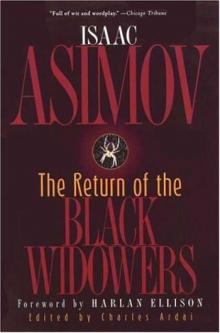 The Return of the Black Widowers
The Return of the Black Widowers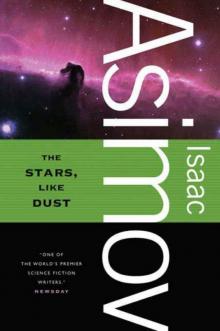 The Stars, Like Dust
The Stars, Like Dust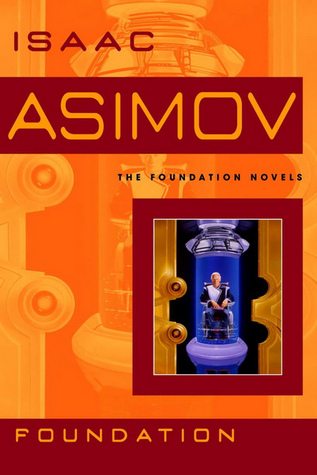 Foundation
Foundation David Starr Space Ranger
David Starr Space Ranger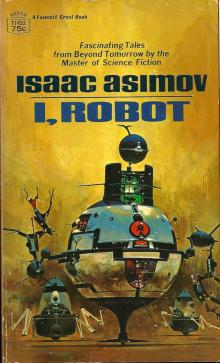 I, Robot
I, Robot Puzzles of the Black Widowers
Puzzles of the Black Widowers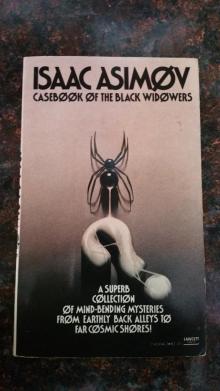 Casebook of the Black Widowers
Casebook of the Black Widowers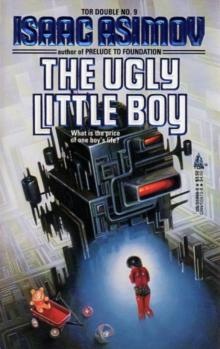 The Ugly Little Boy
The Ugly Little Boy Azazel
Azazel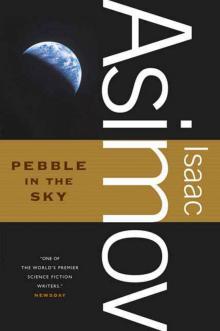 Pebble in the Sky
Pebble in the Sky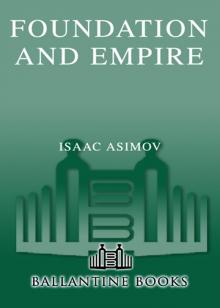 Foundation and Empire
Foundation and Empire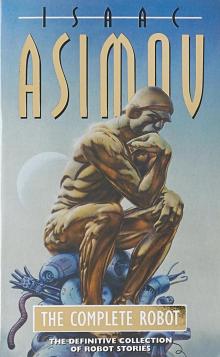 The Complete Robot
The Complete Robot Fantastic Voyage
Fantastic Voyage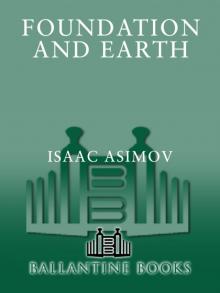 Foundation and Earth
Foundation and Earth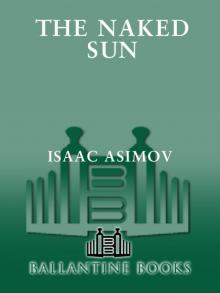 The Naked Sun
The Naked Sun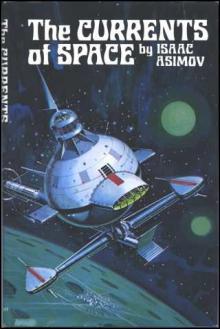 The Currents of Space
The Currents of Space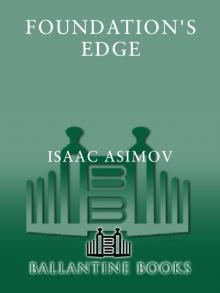 Foundation's Edge
Foundation's Edge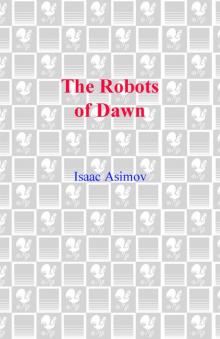 The Robots of Dawn
The Robots of Dawn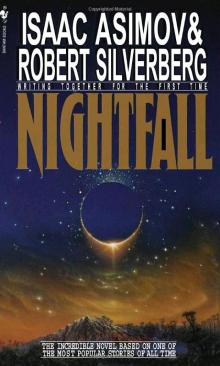 Nightfall
Nightfall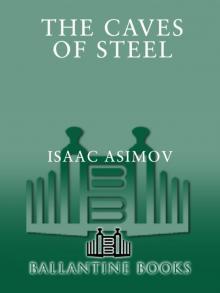 The Caves of Steel
The Caves of Steel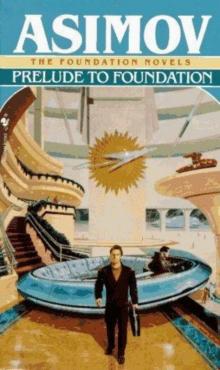 Prelude to Foundation
Prelude to Foundation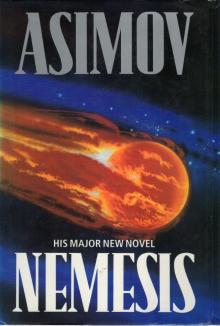 Nemesis
Nemesis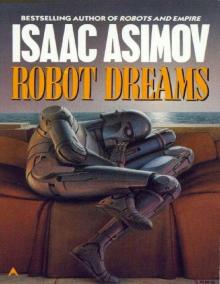 Robot Dreams
Robot Dreams More Tales of the Black Widowers
More Tales of the Black Widowers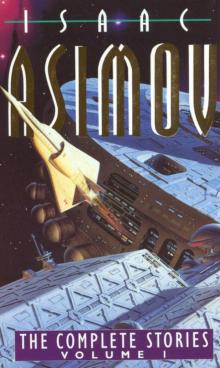 The Complete Stories
The Complete Stories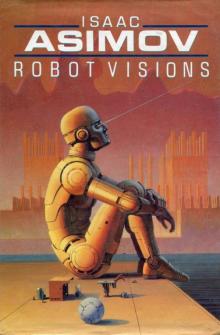 Robot Visions
Robot Visions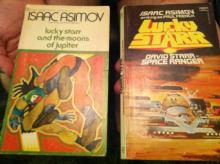 Lucky Starr And The Moons of Jupiter
Lucky Starr And The Moons of Jupiter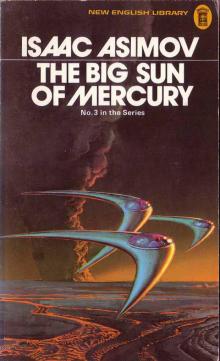 Lucky Starr and the Big Sun of Mercury
Lucky Starr and the Big Sun of Mercury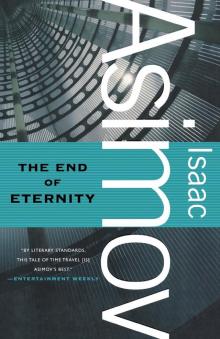 The End of Eternity
The End of Eternity The Bicentennial Man and Other Stories
The Bicentennial Man and Other Stories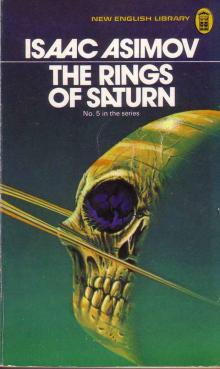 Lucky Starr And The Rings Of Saturn
Lucky Starr And The Rings Of Saturn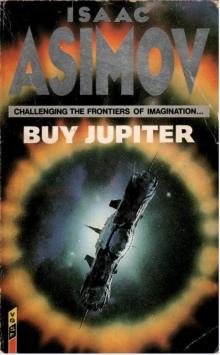 Buy Jupiter and Other Stories
Buy Jupiter and Other Stories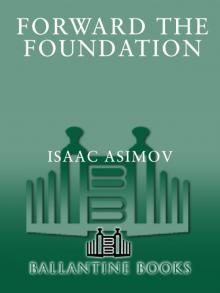 Forward the Foundation
Forward the Foundation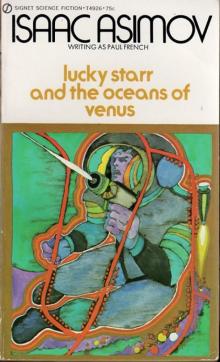 Lucky Starr and the Oceans of Venus
Lucky Starr and the Oceans of Venus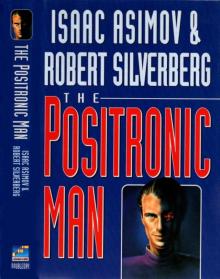 The Positronic Man
The Positronic Man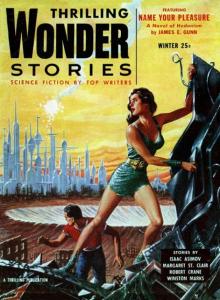 The Portable Star
The Portable Star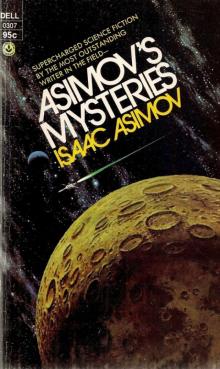 Asimovs Mysteries
Asimovs Mysteries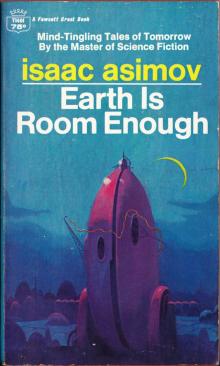 Earth Is Room Enough
Earth Is Room Enough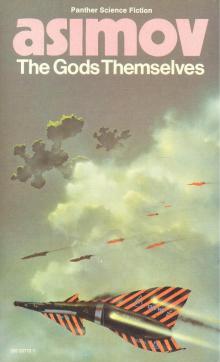 The Gods Themselves
The Gods Themselves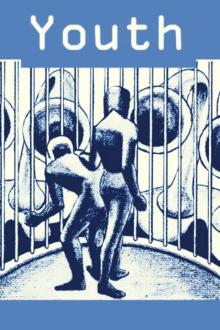 Youth
Youth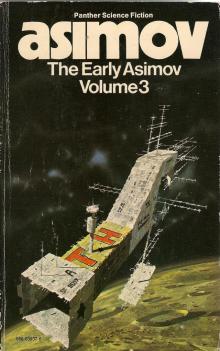 The Early Asimov Volume 3
The Early Asimov Volume 3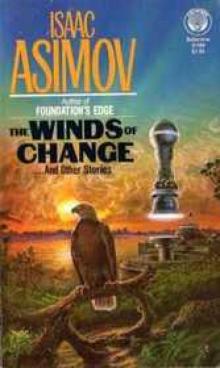 The Winds of Change and Other Stories
The Winds of Change and Other Stories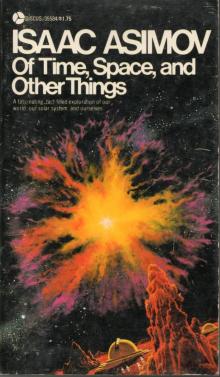 Of Time, Space, and Other Things
Of Time, Space, and Other Things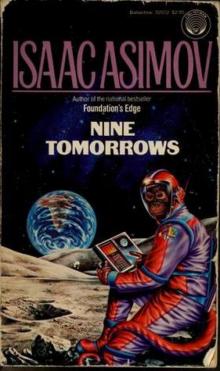 Nine Tomorrows
Nine Tomorrows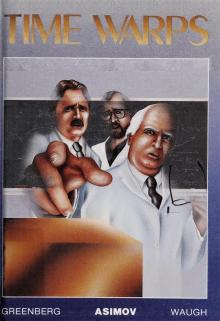 Time Warps
Time Warps Robots and Empire
Robots and Empire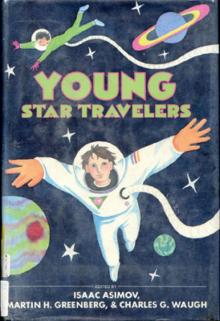 Young Star Travelers
Young Star Travelers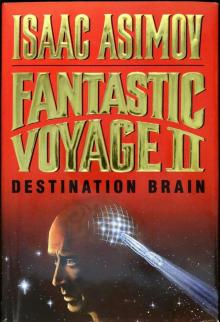 Fantastic Voyage II: Destination Brain
Fantastic Voyage II: Destination Brain Second Foundation
Second Foundation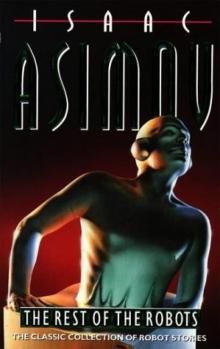 The Rest of the Robots
The Rest of the Robots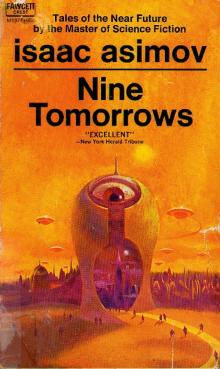 NINE TOMORROWS Tales of the Near Future
NINE TOMORROWS Tales of the Near Future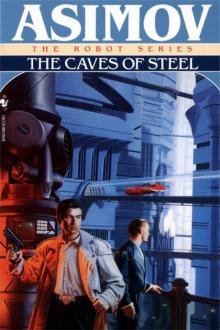 Daneel Olivaw 1 - The Caves of Steel
Daneel Olivaw 1 - The Caves of Steel THE BICENTENNIAL MAN
THE BICENTENNIAL MAN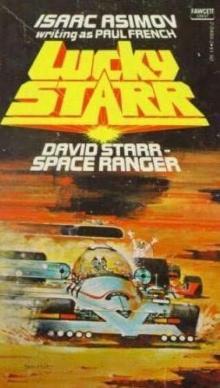 David Starr Space Ranger (lucky starr)
David Starr Space Ranger (lucky starr)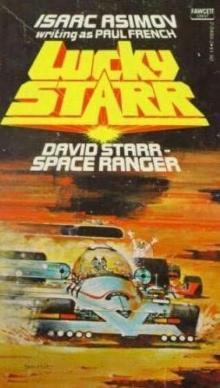 David Starr Space Ranger (ls)
David Starr Space Ranger (ls)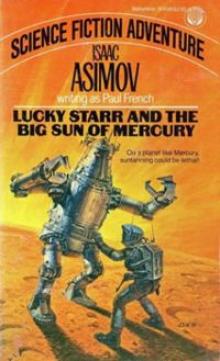 Lucky Starr And The Big Sun Of Mercury ls-4
Lucky Starr And The Big Sun Of Mercury ls-4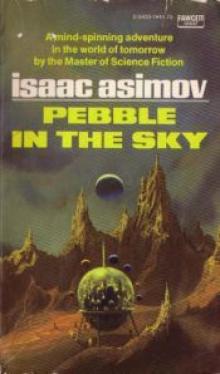 Pebble In The Sky te-1
Pebble In The Sky te-1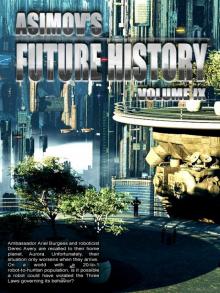 Asimov’s Future History Volume 9
Asimov’s Future History Volume 9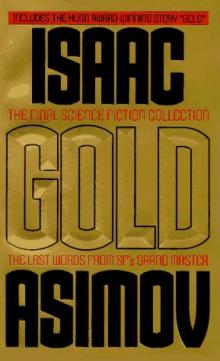 Gold: The Final Science Fiction Collection
Gold: The Final Science Fiction Collection Foundation and Earth f-7
Foundation and Earth f-7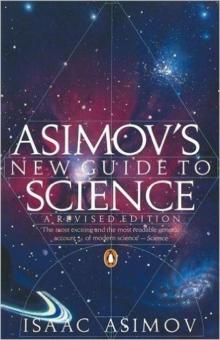 Asimov's New Guide to Science
Asimov's New Guide to Science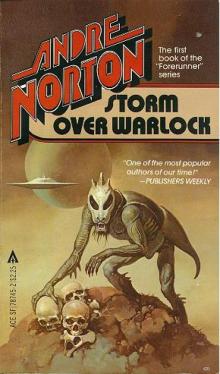 STORM OVER WARLOCK
STORM OVER WARLOCK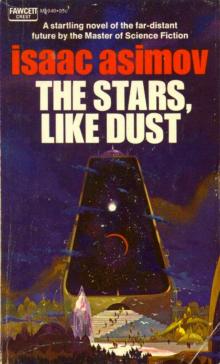 Stars, Like Dust
Stars, Like Dust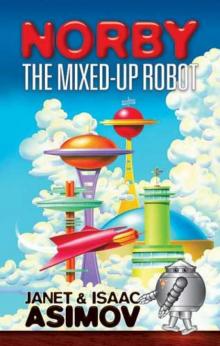 Norby The Mixed-Up Robot
Norby The Mixed-Up Robot Found!
Found!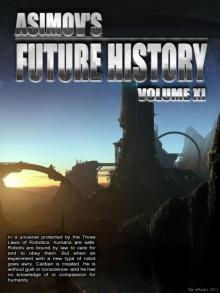 Asimov’s Future History Volume 11
Asimov’s Future History Volume 11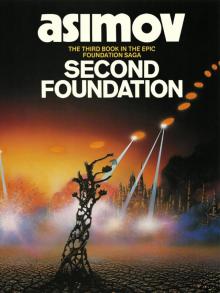 Second Foundation f-5
Second Foundation f-5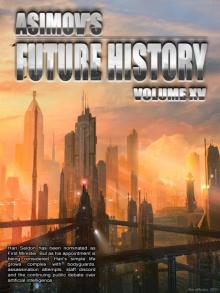 Asimov’s Future History Volume 15
Asimov’s Future History Volume 15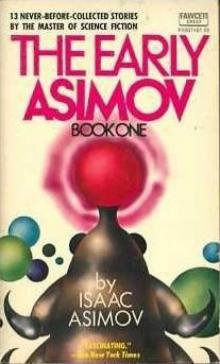 The Early Asimov. Volume 1
The Early Asimov. Volume 1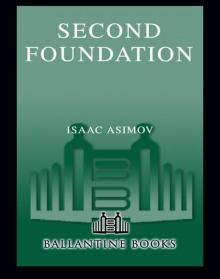 Secound Foundation
Secound Foundation Daneel Olivaw 3 - The Robots of Dawn
Daneel Olivaw 3 - The Robots of Dawn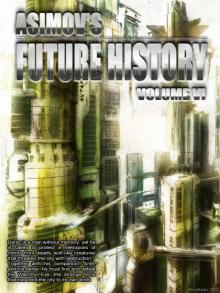 Asimov’s Future History Volume 6
Asimov’s Future History Volume 6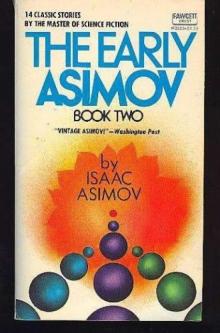 The Early Asimov. Volume 2
The Early Asimov. Volume 2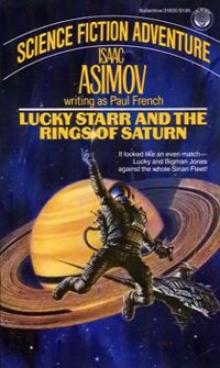 Lucky Starr And The Rings Of Saturn ls-6
Lucky Starr And The Rings Of Saturn ls-6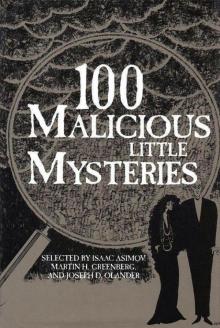 100 Malicious Little Mysteries
100 Malicious Little Mysteries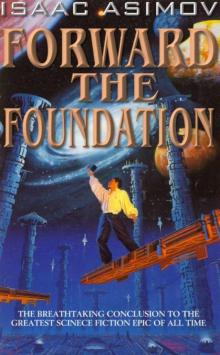 Forward the Foundation f-2
Forward the Foundation f-2 I.Asimov: A Memoir
I.Asimov: A Memoir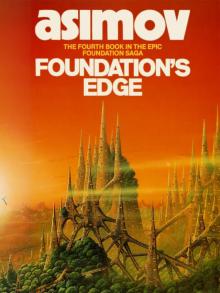 Foundation's Edge f-6
Foundation's Edge f-6 Lucky Starr and the Pirates of the Asteroids ls-2
Lucky Starr and the Pirates of the Asteroids ls-2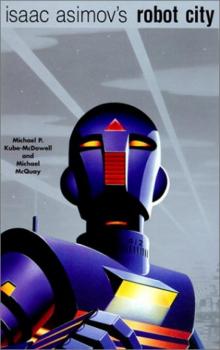 Robot City 1 & 2
Robot City 1 & 2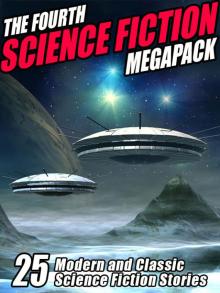 The Fourth Science Fiction Megapack
The Fourth Science Fiction Megapack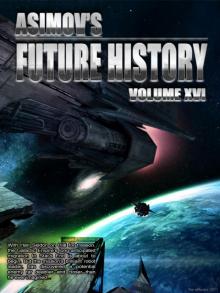 Asimov’s Future History Volume 16
Asimov’s Future History Volume 16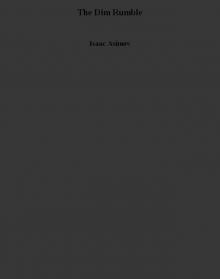 The Dim Rumble
The Dim Rumble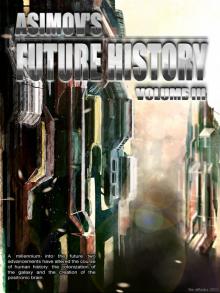 Asimov's Future History Volume 3
Asimov's Future History Volume 3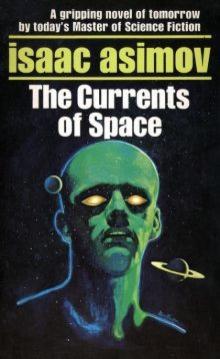 The Currents Of Space te-3
The Currents Of Space te-3 Asimov’s Guide To Shakespear. Volume 1
Asimov’s Guide To Shakespear. Volume 1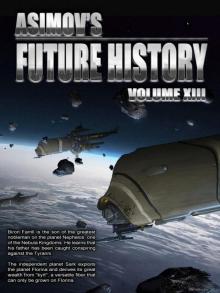 Asimov’s Future History Volume 13
Asimov’s Future History Volume 13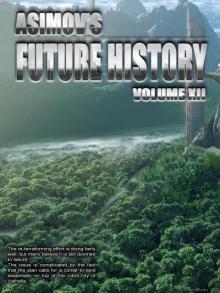 Asimov’s Future History Volume 12
Asimov’s Future History Volume 12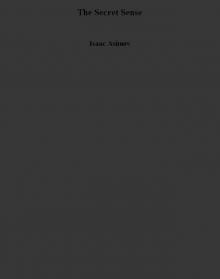 The Secret Sense
The Secret Sense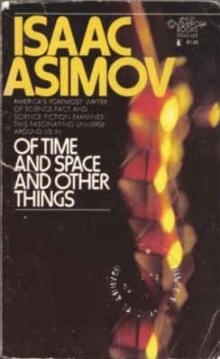 Of Time and Space and Other Things
Of Time and Space and Other Things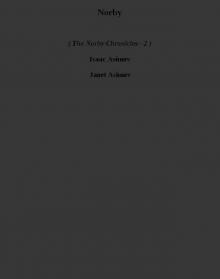 Norby tnc-2
Norby tnc-2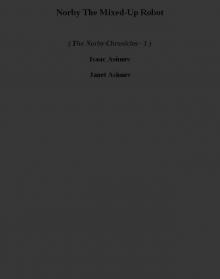 Norby The Mixed-Up Robot tnc-1
Norby The Mixed-Up Robot tnc-1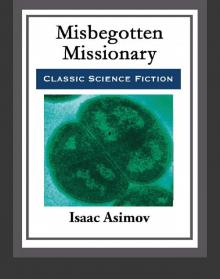 Misbegotten Missionary
Misbegotten Missionary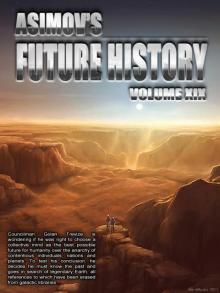 Asimov’s Future History Volume 19
Asimov’s Future History Volume 19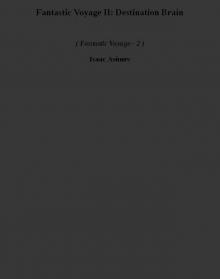 Fantastic Voyage II: Destination Brain fv-2
Fantastic Voyage II: Destination Brain fv-2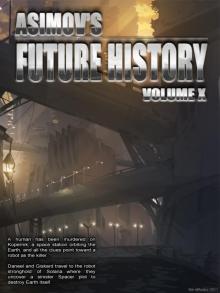 Asimov’s Future History Volume 10
Asimov’s Future History Volume 10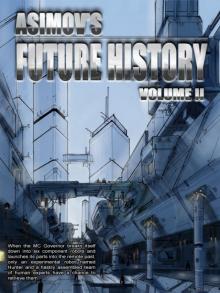 Asimov's Future History Volume 2
Asimov's Future History Volume 2 Feeling of Power
Feeling of Power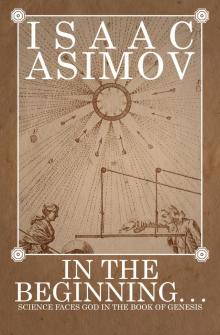 In the Beginning
In the Beginning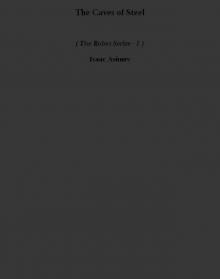 The Caves of Steel trs-1
The Caves of Steel trs-1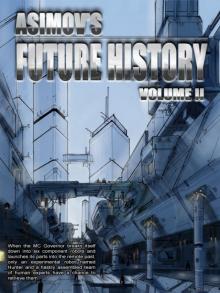 Asimov's Future History Vol 2
Asimov's Future History Vol 2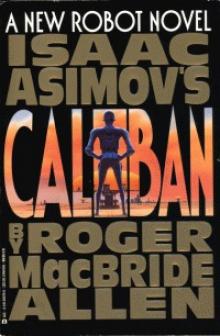 Caliban c-1
Caliban c-1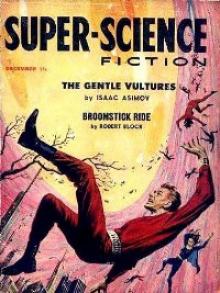 The Gentle Vultures
The Gentle Vultures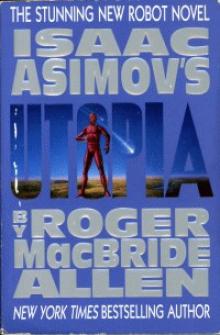 Utopia c-3
Utopia c-3 Prelude to Foundation f-1
Prelude to Foundation f-1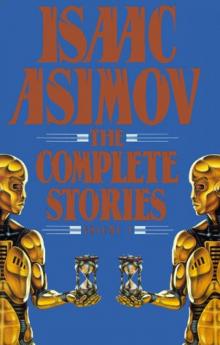 Short Stories Vol.1
Short Stories Vol.1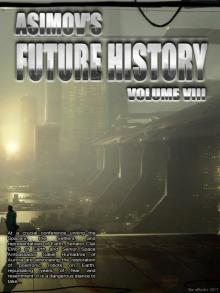 Asimov’s Future History Volume 8
Asimov’s Future History Volume 8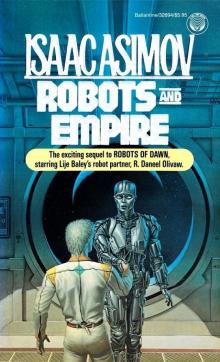 Daneel Olivaw 4 - Robots and Empire
Daneel Olivaw 4 - Robots and Empire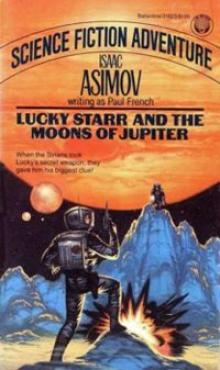 Lucky Starr The And The Moons of Jupiter ls-5
Lucky Starr The And The Moons of Jupiter ls-5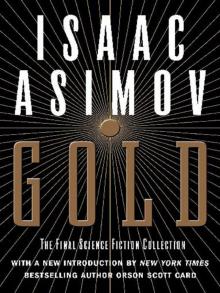 Gold
Gold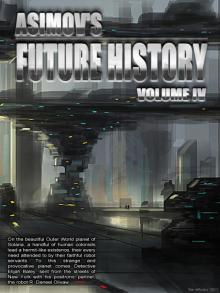 Asimov’s Future History Volume 4
Asimov’s Future History Volume 4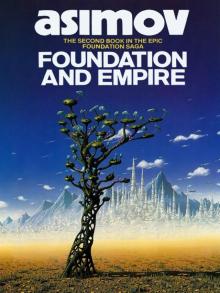 Foundation and Empire f-4
Foundation and Empire f-4 Potential
Potential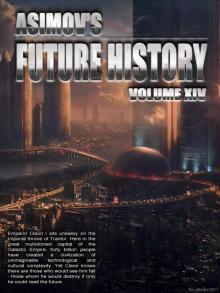 Asimov’s Future History Volume 14
Asimov’s Future History Volume 14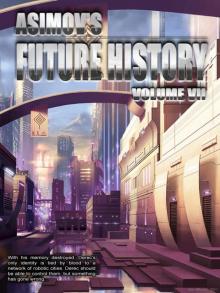 Asimov’s Future History Volume 7
Asimov’s Future History Volume 7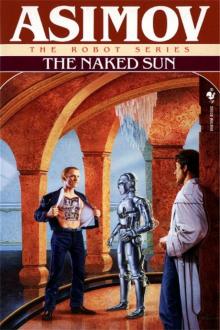 Daneel Olivaw 2 - The Naked Sun
Daneel Olivaw 2 - The Naked Sun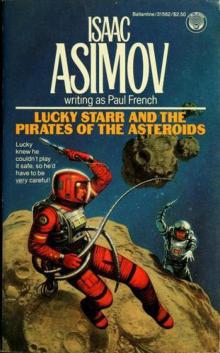 Lucky Starr and the Pirates of the Asteroids
Lucky Starr and the Pirates of the Asteroids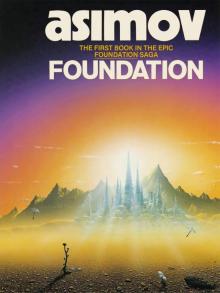 Foundation f-3
Foundation f-3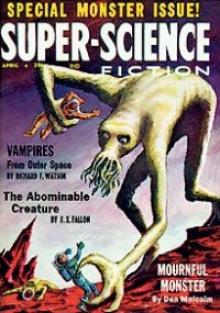 All the Troubles of the World
All the Troubles of the World Cleon the Emperor
Cleon the Emperor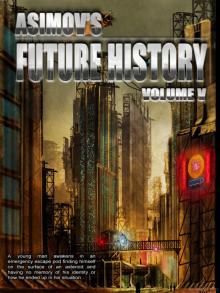 Asimov's Future History Volume 5
Asimov's Future History Volume 5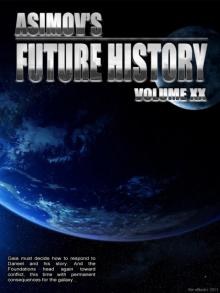 Asimov’s Future History Volume 20
Asimov’s Future History Volume 20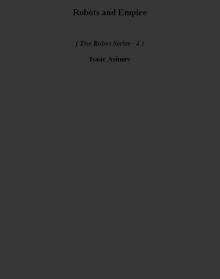 Robots and Empire trs-4
Robots and Empire trs-4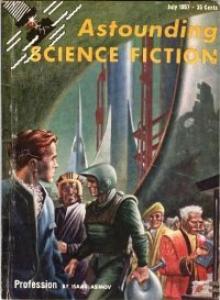 Profession
Profession It's Been a Good Life
It's Been a Good Life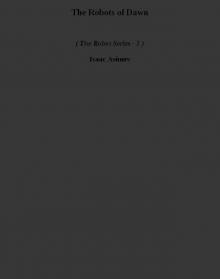 The Robots of Dawn trs-3
The Robots of Dawn trs-3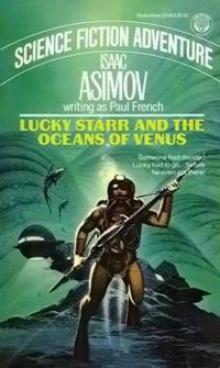 Lucky Starr And The Oceanf Of Venus ls-3
Lucky Starr And The Oceanf Of Venus ls-3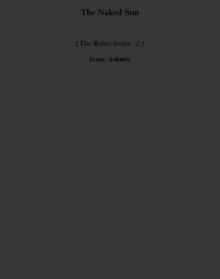 The Naked Sun trs-2
The Naked Sun trs-2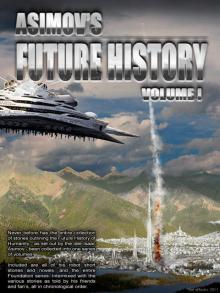 Asimov's Future History Volume 1
Asimov's Future History Volume 1